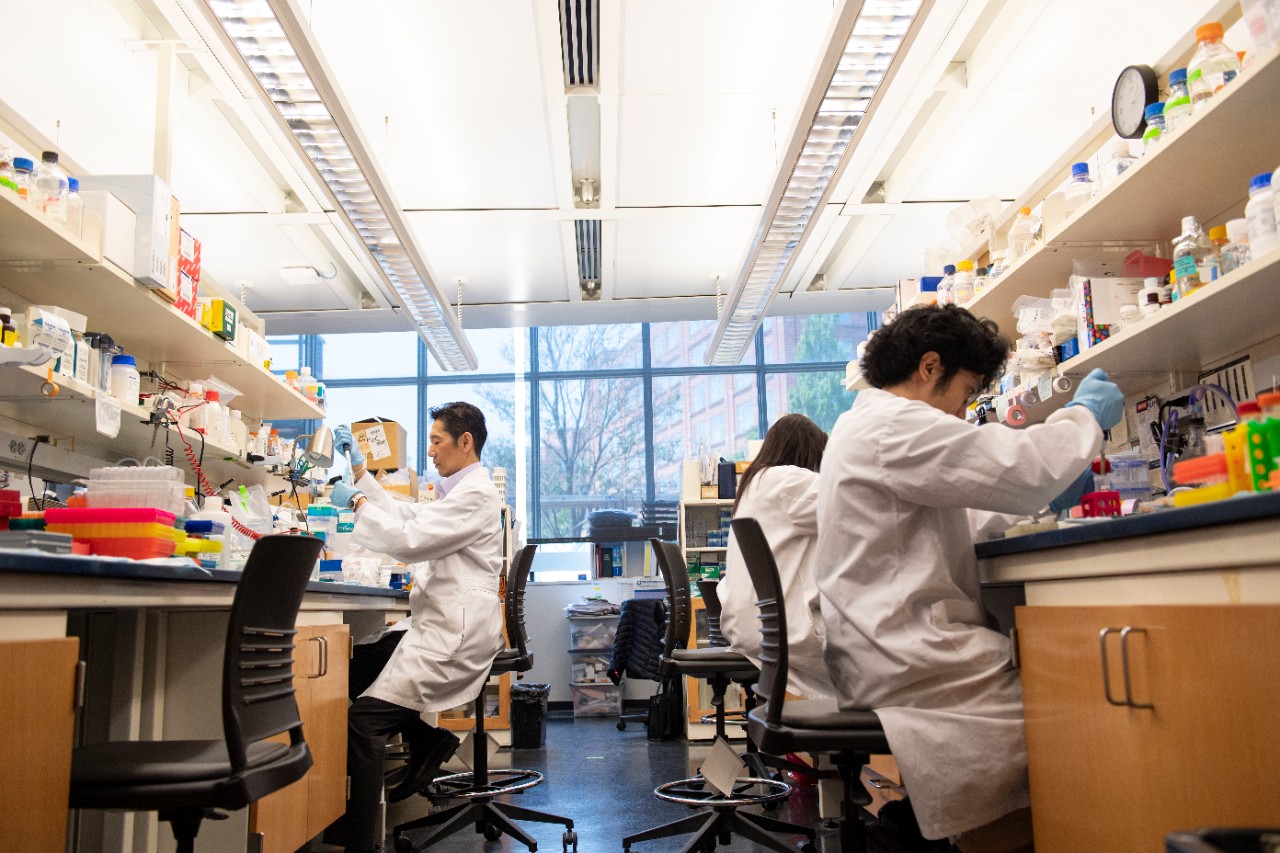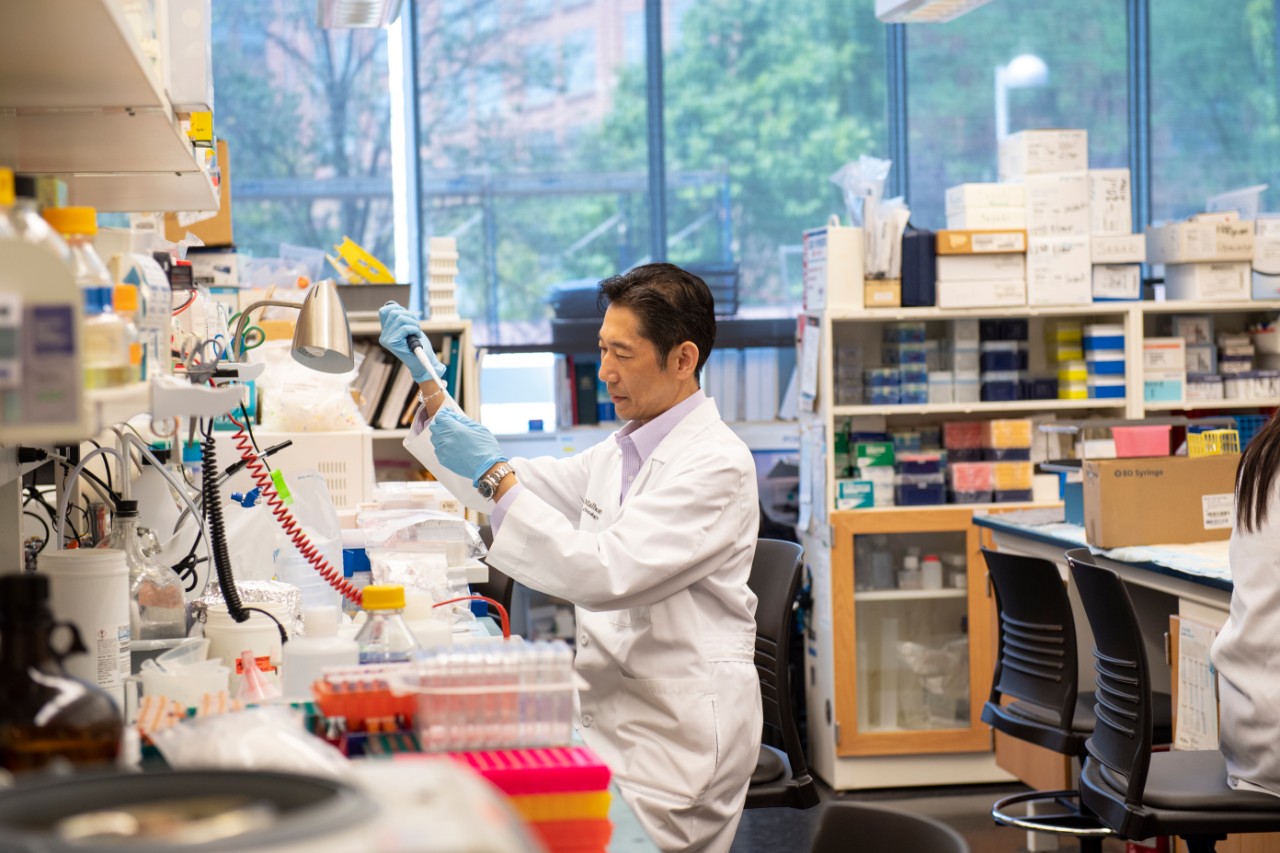When you’re hungry and find your cupboards are bare, you’ll probably find yourself heading to the grocery store to restock on food.
Human cells act similarly when starved for energy, showing a remarkable resiliency to move to an energy-rich environment to gather nutrients. However, cancer cells also have this ability, and moving toward nutrients can help cancer cells grow and spread (or metastasize) throughout the body.
It is still unclear exactly what mechanisms help cells move to meet energy demands, and an international research group including the University of Cincinnati’s Atsuo Sasaki, PhD, has been awarded a $1.5 million Human Frontier Science Program (HFSP) research grant to learn more. Each of the three lead researchers and their institutions, including Sasaki and UC, will receive $500,000 of funding for the project.
Forming the team
HFSP awards grants for basic research projects that require collaboration from an international team of researchers from different disciplines with a goal of explaining sophisticated and complex mechanisms within living organisms. The grants are highly competitive and difficult to earn, but are reserved for top-tier research, as 28 HFSP awardees have gone on to win the Nobel Prize in fields including physiology, medicine, chemistry and physics.
Sasaki has focused his research on cellular energy and metabolism and said his fourth HFSP application proved successful after finding collaborators Laura Machesky of the Beatson Institute for Cancer Research in Scotland and Yasufumi Takahashi of Kanazawa University’s Nano Life Science Institute in Japan.


Atsuo Sasaki, PhD, left, at work in his lab. Photo/Colleen/Kelley.
About two years ago, Sasaki connected with Machesky, an expert on cellular invasion, a process where cells move and infiltrate nearby tissues. Cancer cells that become invasive help the cancer grow and metastasize to secondary sites.
Takahashi, who specializes in cellular imaging, rounded out the team. Takahashi is a pioneer in a technique known as scanning ion-conductance microscopy (SICM), which uses ion currents to produce high-resolution images of individual cell structures that can be as small as a single micrometer in length.
Research focus
Sasaki and his lab have focused their study on an energy molecule called GTP. Previous studies have found that brain tumors use a special process to utilize GTP for energy, and tumors in animal models shrunk when that process was blocked.
More recent research from Sasaki’s team suggests GTP is brought to the “front” of the cell to help cancer cells move, grow and spread, but it is not known exactly how this happens.
“GTP-specific enzymes cannot just go to the front of the cell,” said Sasaki, associate professor at the UC College of Medicine. “So once we can identify this system, probably we can shut off this GTP-driven cell metastasis. That’s our goal: to identify it, then target it to suppress cancer metastasis.”
One of the study’s goals is to observe and confirm that GTP is indeed synthesized at the front of cells, which will be accomplished using Takahashi’s SICM imaging technique. SICM will allow the team to detect cellular metabolic changes at the subcellular level, something that has never been done before, as well as identify specific protein machinery at the front of cells that help cells migrate and grow.


Sasaki is the first UC researcher to ever be awarded an HFSP research grant. Photo/Colleen Kelley.
The team will develop a system able to be controlled remotely so that SICM imaging can be performed by anyone, anywhere in the world, a useful feature for international research like this project. They will also explore machine learning technology so that artificial intelligence can use SICM to identify cellular characteristics automatically without the need for human analysis.
The hope is that this new information will help better define what mechanisms are used to help cells move, utilize energy and allocate energy to cell movement, Sasaki said. These mechanisms could become the next generation of targets for cancer drugs.
“If we can [observe] this system, then some tumor-specific metabolic or metastatic components can be targeted,” Sasaki said. “Maybe we can shut off that process to directly suppress the cell migration, or we can control the cell’s migratory process. That’s the long-term goal of this project.”
Cell migration is also involved in certain neurological conditions and defense from bacterial infections, so the knowledge gained from this research may also extend beyond treatments for cancer.
“There are so many potential applications,” Sasaki said. “We are hopeful that this technology can provide a new platform.”
Sasaki is the first UC researcher to ever be awarded an HFSP research grant.
Featured photo at top of Atsuo Sasaki in his lab. Photo/Colleen Kelley.






































